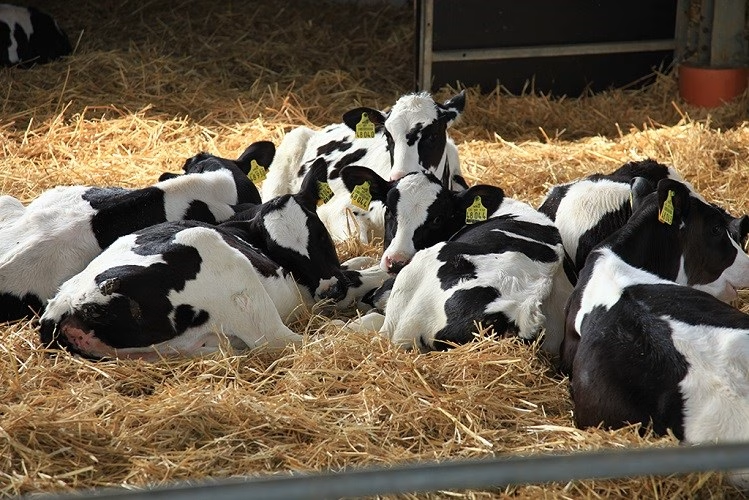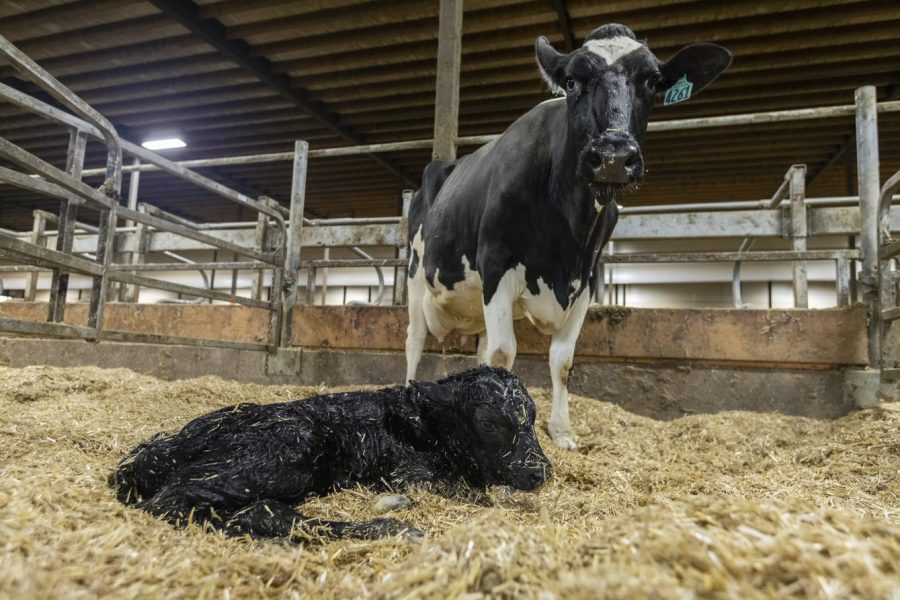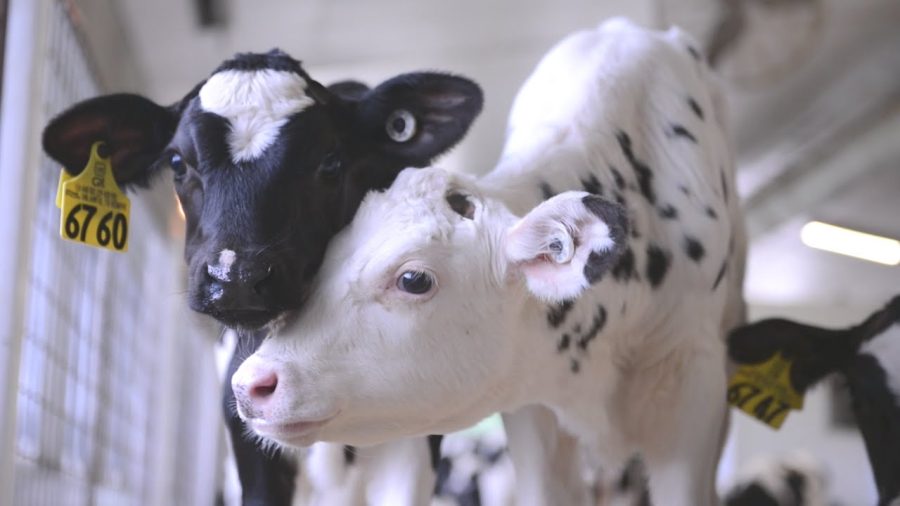Unlock the secrets of calf and heifer nutrition from conception to puberty. How can optimal feeding strategies boost dairy production and animal health? Discover more.

Calf and heifer nutrition is essential to dairy production, although it is sometimes disregarded. The developmental phases from conception to puberty are crucial for young cattle’s health and growth as well as long-term production and efficiency in dairy operations. Surprisingly, calves have the greatest rates of sickness and death among all animals on dairy farms. This troubling trend emphasizes the critical need for sophisticated nutritional solutions that might prevent these hazards and, eventually, boost dairy profitability.
Calves, unfortunately, bear the brunt of the highest morbidity and mortality rates on dairy farms. This stark reality underscores the pressing need for enhanced nutritional strategies.
The journey from conception to the early stages of life provides multiple chances to refine feeding practices. Progressive research emphasizes maternal nutrition’s significant influence on fetal growth, immunoglobulin-rich feeds shortly after delivery, and the deliberate shift from milk-based to solid meals. As we go through these critical stages, it becomes clear that a collaborative effort to address these nutritional deficiencies is vital for improving animal welfare, development, and the overall sustainability of the dairy sector.
| Aspect | Statistic | Implication |
|---|---|---|
| Calf Mortality Rate | 7.8% in the first 60 days | Significant loss of potential; highlights need for better neonatal care |
| Colostrum Quality | Only 60% achieve adequate IgG levels | Insufficient immunity transfer; requires improved colostrum management |
| Milk Replacer Usage | 80% of dairy calves globally | Necessitates evaluation of nutritional adequacy compared to whole milk |
| Weaning Age | Varies between 6-8 weeks | Impacts digestive development and future health; optimal timing crucial |
| Post-Weaning Growth Rate | 1.8-2.2 lbs/day | Directly influences future milk production; emphasizes need for balanced nutrition |
Maternal Nutrition: The Foundation of Future Dairy Success
The role of maternal nutrition in shaping the future of dairy success cannot be overstated. The mother’s intake of sufficient energy and protein significantly influences the fetus’s developmental plasticity, a crucial phase when the growing organism’s ability to alter and adapt is at its peak.
The period from conception to the early stages of life sets the stage for the calf’s future output. The mother’s assimilation of nutrients is instrumental in promoting fetal development and establishing physiological pathways for calf growth, health, and milk supply.
Colostrum: The Lifeblood of Early Calf Development
The calf’s first colostrum feeding is a vital foundation for building robust health and survival. Colostrum, which contains immunoglobulins, is essential for transmitting passive immunity and developing a calf’s immune system. These immunoglobulins serve as the calf’s first line of defense against infections, providing a protective barrier during the early stages of life while the immune system is still developing.
Beyond immunoglobulins, colostrum is rich in bioactive components such as proteins, lipids, and carbohydrates. These chemicals are critical in maintaining health and promoting appropriate growth and development. These bioactive components are anticipated to affect various physiological activities, supporting future dairy herd production and lifespan.
Extended colostrum or transition milk feeding, in which the calf receives these essential nutrients longer after birth, has had positive outcomes. Gradually transitioning from colostrum to regular milk enables a continuous supply of these crucial bioactive components, improving the calf’s overall health metrics and growth rates during those critical initial days and weeks. This strategy facilitates a smoother transition into the preweaning period, laying the groundwork for the calf’s growth path.
Nurturing Resilience: The Imperative of Optimal Preweaning Nutrition
The health and development of dairy calves depend heavily on optimal nutrition throughout the pre-weaning stage. At this critical time, calves are more prone to various health issues that might impede their development and future output. Ensuring an appropriate and balanced diet helps reduce these risks and promotes healthy growth. This, in turn, has significant long-term benefits for their future milk supply, as healthier calves tend to develop into more productive cows, fostering optimism about the future of the dairy herd.
Recent research has also prompted a critical reassessment of classic milk replacer formulas. Historically, these formulations have been the standard for calf feeding, and they are being studied for their composition and effectiveness compared to whole milk. The objective is to improve the nutritional composition of these milk replacers to satisfy the demands of preweaning calves better, guaranteeing their survival and growth during this sensitive period.
Smooth Transitions: Navigating the Shift from Milk to Solid Feed for Calves
Transitioning from a milk-based diet to solid feed is an essential stage in the life of a dairy calf. The transition to a solid diet promotes the growth of the rumen, which is necessary for mature ruminant function. This process must be carefully controlled to ensure the calf adjusts without excessive stress, which might result in poor development and health difficulties. According to research, delaying weaning age and using progressive step-down techniques may help lessen these hazards, providing reassurance about the process.
Gradual step-down techniques entail slowly reducing liquid feed while gradually boosting solid feed intake. This stepwise technique helps the calf’s digestive system to acclimate to the nutritional shift, resulting in a more seamless transition to a solid diet. This method is critical in avoiding growth setbacks and health issues sometimes connected with sudden weaning procedures.
Balancing your calorie and protein consumption throughout this changeover is equally vital. The nutritional mix of liquid and solid meals must be precisely tuned to match the calf’s changing requirements. For example, keeping a more excellent protein content in liquid feed while introducing energy-dense starter feeds may help with consistent growth and rumen development. Recent research has shown that calves fed a well-balanced diet that accounts for their pre-weaning milk allowances have improved overall health and growth metrics during and after weaning.
Finally, these approaches demonstrate the complicated relationship between early nutrition and long-term dairy performance. Dairy producers may improve calf resilience by concentrating on well-timed, progressive changes and precise nutritional balance, laying the groundwork for future production and health.
Strategic Nutrition for Heifers: Navigating the Path from Weaning to Puberty
As heifers go from weaning to adolescence, their dietary regimens ensure they continue to grow and develop normally. Historically, high-forage diets have been administered early to stimulate digestive development and rumen function. However, new research suggests that this early transition to high-forage diets may reduce feed intake and overall development at a critical period when their efficiency in turning solid feed into growth is at its optimum.
During the post-weaning era, heifers undergo significant physiological changes that require well-balanced dietary support for vigorous development. This time also establishes the foundations for future milk production capability and overall herd performance. To maximize development potential, meals must be carefully designed to supply appropriate calories and protein while considering the balance of these nutrients.
The study emphasizes the significance of progressively shifting from milk-based diets to solid feed while maintaining optimal calorie and protein consumption levels to prevent growth plateaus or regressions. An emphasis on feeding a combination of high-quality forages and grain-based supplements may assist young ruminants in maintaining momentum in growth and development without overstressing their digestive systems.
Furthermore, recent research has indicated that postponing the introduction of exclusive high-forage diets and progressively introducing them with more nutrient-dense feeds might result in increased intake and growth rates. This technique takes advantage of the peak period of solid feed efficiency, enabling heifers to acquire the ideal weight and body condition required for successful reproduction and maximum milk output later in life.
Post-weaning to puberty is critical to a heifer’s growth. Implementing deliberate and balanced nutritional regimens that postpone the sudden transition to high-forage diets may improve heifer development and prepare them for future dairy production responsibilities. Continuous study and adaption of feeding techniques based on new data will be critical to improving these regimens and ensuring dairy farms’ long-term viability and profitability.
The Bottom Line
This article highlights the critical phases of calf and heifer nutritional development, from maternal nutrition during pregnancy to strategic feeding of heifers nearing puberty. It demonstrates how nutritional timing, balanced diets, and proper transitions from milk to solid feed may significantly influence calf health, development, and future production capacity. The message is clear: obtaining optimum calf and heifer nutrition promotes immediate health and growth advantages while laying the groundwork for long-term dairy business efficiency and profitability.
To fully realize these advantages, a more concentrated and systematic research approach is required. Such a strategy should focus on understanding and improving nutritional regimens at each developmental stage to guarantee that the dairy sector is economically viable and sustainable. To summarize, focused and thorough calf and heifer nutrition research is advantageous and critical to global dairy businesses’ long-term sustainability and performance.
Key Takeaways:
- Maternal Nutrition: Adequate energy and protein intake by the mother during fetal development is essential, as it directly influences the calf’s future growth and performance.
- First Colostrum Feeding: The initial colostrum intake is not just about immunoglobulin transfer; it includes bioactive compounds critical for early calf health and development.
- Extended Colostrum Feeding: A gradual transition from colostrum to milk can provide extended benefits during the early days of the calf’s life.
- Preweaning Nutrition: Optimum nutrition during the pre-weaning period is vital for improving calf health and future milk production. Recent studies suggest reevaluating traditional milk replacer formulations.
- Transition to Solid Feed: Delaying weaning age and adopting a gradual step-down approach to milk allowances can help avoid production and health issues.
- Post-Weaning Diets: High-forage diets immediately after weaning can depress intake and development. Strategies should focus on maximizing the efficiency of solid feed intake.
Summary:
Calf and heifer nutrition is crucial for dairy production, as it influences the health and growth of young cattle. However, calves have the highest rates of sickness and death, highlighting the need for advanced nutritional solutions to prevent these hazards and boost dairy profitability. Maternal nutrition influences fetus development, with colostrum essential for passive immunity and calf immune system development. Extended colostrum or transition milk feeding can facilitate a smoother transition into the preweaning period. Optimal preweaning nutrition is crucial for dairy calves, which are more prone to health issues. Recent research has prompted a critical reassessment of milk replacer formulas to improve nutritional composition. Strategic nutrition for heifers is essential as they transition from weaning to adolescence.















